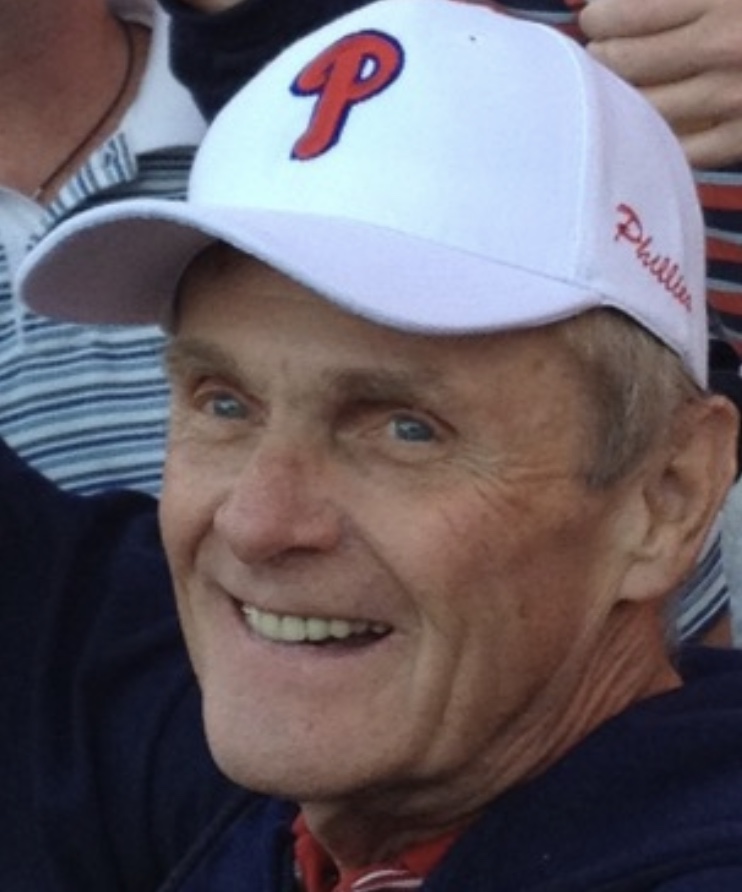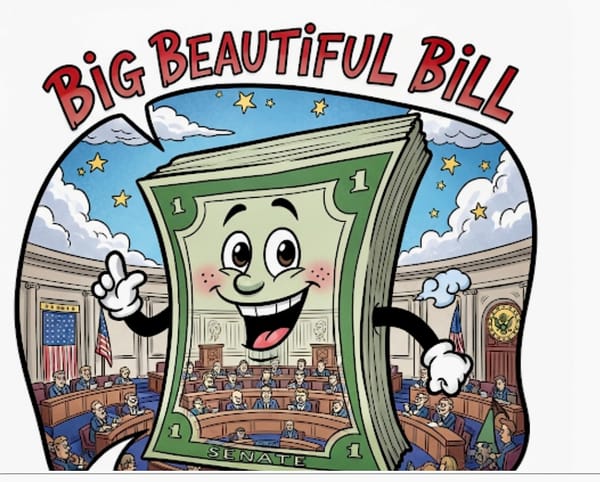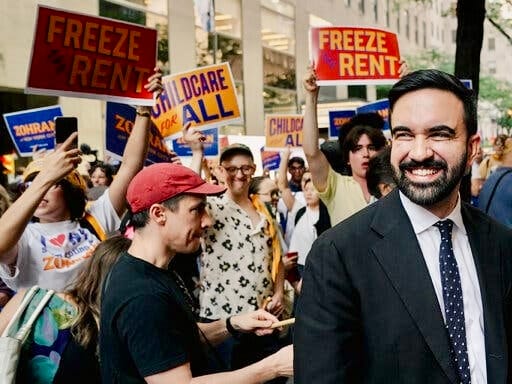The people’s man at the People Paper
In a newsroom filled with larger than life characters — Jack McKinney, Pete Dexter, Bill Conlin, Larry Fields, Chuck Stone — Joe Clark appeared to be smaller than life, but that was deceptive.

The blue-eyed, curly haired Irishman out of Southwest Philly was more “Philadelphia” than any of them, and went about the business of quietly turning out heart-felt, human-interest prose, his best work about the plain neighborhood people who have always made Philadelphia work.
The man known as Joe, Joey, or Clarkie in the newsroom passed away Feb. 2, taken by prostate cancer at the age of 82. He was known as Pop to everyone else, his son Matt told me.
A product of Philadelphia’s parochial schools, Joe went from West Catholic High into a few blue collar jobs, such as Upper Darby’s 69th Street Sears, before stumbling into the Philadelphia Daily News, nicknamed the People Paper.
He worked there from 1956 — a year before it was bought by Walter Annenberg and moved into the Inquirer building at 400 N. Broad — until his retirement in 2000, before the financial floor really collapsed. He was among the last generation of journalists able to enter the business absent a college degree. He spent four long years as a lowly copyboy — that’s what journalists called go-fers — before being promoted to a police reporter, working out of police headquarters in City Hall, covering crime, the ugly face of Philadelphia.
The term “copyboy” was dropped sometime in the ‘70s because recently-hired African-American copyboys thought it was racist, because of the “boy.” And females felt it was sexist, so out it went. A charming, anachronistic, uniquely journalistic term lost to posterity, banished by Political Correctness.
Starting as a copyboy editorial assistant was the traditional lowest rung on the ladder to success in newspapers, and the Daily News kept it going longer than most other newspapers. That newsroom was populated almost exclusively by native Philadelphians, while the inquirer attracted a lot of out-of-towners with Ivy League degrees, most especially after it was acquired by Knight Newspapers (later Knight-Ridder) in 1969 for $55 million from Annenberg. Knight-Ridder could afford to pay top salaries because after it killed the Evening Bulletin in 1982, the operation was a Niagara Falls of cash. I’m talking $50 million anually from classifieds alone (before the internet, think Craig’s List, killed all newspaper classifieds).
With that money, Knight turned the Inquirer into a journalistic battleship that won 17 Pulitzer Prizes, six consecutively between 1975 and 1980, and more journalism awards than any other newspaper in the United States.
The Daily News has won three — 1985, editorials; 1992, editorial cartoons; 2009, investigative reporting.
My first journalism job, while I was a student attending college at night, was as a copyboy at the World-Telegram & The Sun. My 1959 salary was $48.
Joe’s first salary was $37 in 1956 (Philly was paying less than New York, then and now), while he was raising two children (eventually six) with his wife, Margaret Kelly, in Southwest Philly (later Drexel Hill). He was introduced to his beloved Kell on the 13 trolley by one of her friends and ding-ding went Joe’s heart, just like the trolley bell.
They were married for 56 years before her death in 2013. After that, he hated going home to the big empty house. When he passed, “he was ready to be reunited” with Kell, said Matt.
They had six children, 12 grandchildren, 6 great grandchildren.
With six kids, Joe needed a big house and found one in Drexel Hill in 1972.
As a family man on a tight budget, he was never one of those hard-drinking newspapermen who caroused around the town getting shitfaced several times a week. I don’t recall ever seeing him at the bar at the Pen & Pencil Club, the after-hours hangout for local journalists, and their friends, such as hospitality workers.
For a long time Joe drove a white Nova that had been a company car. Every few years the company — then prosperous — refreshed its fleet and offered the old cars to staffers at a huge discount. Joe’s was notable in the parking lot because of the rear window decals of the colleges his six kids attended — Temple, La Salle, Duquensne, Slippery Rock, University of Charleston, Delaware County Community.
With six kids, it’s not surprising Joe brown bagged his lunch every day and ate at his desk, as most reporters did. Dining choices were limited around 400 N. Broad St., and reporters had only a half-hour for lunch. On the corner of 15th and Callowhill, Westy’s bar (and restaurant) was favored for quick service and low prices by Daily News and Inquirer people — reporters and printers and pressmen — but also by nurses and interns from nearby Hahnemann Hospital.
One of Joe’s lunches became a legend at the Daily News.
He put his brown bag in the office refrigerator in the morning. When he went for it at noontime — it wasn’t there.
“What the…?” thought Joe, as he walked back to his desk.
As he passed the desk of dwarfish cityside reporter Dave Bittan, he saw him eating his lunch.
And I mean Bittan was eating Joe’s lunch.
The normally quiet Joe hit the ceiling and screamed at Bittan.
“Why did you eat my lunch?,” Joe demanded.
As I recall, Bittan’s excuse was, “I was hungry.”
Well, sure, that explains it.
The sandwich was only bologna and cheese, but straight-arrow Joe was steamed by how brazen the theft was.
Other than this, one thing I remember about Bittan was that he shared a 1989 byline on a story about a big drug bust with Gabriel Escobar, who’s now editor of the Inquirer.
Small world.
Joe covered almost everything during his four decades at the tabloid, but eventually settled in to do something he was born to do — tell everyday stories about everyday Philadelphians, mostly working class people like himself. That column was called “My Hometown,” and it was the idea of editor Zack Stalberg who recognized Joe’s unique storytelling ability.
Joe racked up more than 2,600 bylines during his time at the Daily News, and continued writing after retirement for Milestones, a tabloid for senior citizens.
He needed to read his newspapers every day, said Matt, and also needed to write. A lot of the old-timers are like that. (Ahem.)
Beside reading and writing, Joe had one odd hobby — painting ready-made small birdhouses and giving them as gifts.
His Daily News stories seldom made Page One, because Page One was dominated by sex, scandal and sports. Joe’s stories on people could be described by one word used on almost no one else’s work — sweetness.
When he wrote about someone, they were the star of the piece, unlike many of the better-known bylines that made themselves the center of their work. Everyone Joe wrote about got a fair shake.
He wrote about “people who made a commitment to make a positive change in their lives, communities and neighborhoods,” remembered Matt.
“Pop wrote about a flourishing garden in North Philadelphia, a little league team making room for a female shortstop in suburban Drexel Hill, an artist who painted murals in South Philadelphia.”
I remember Joe at his keyboard — first a typewriter, later a PC — sitting back, thinking, with his chin cupped in his right hand. When I passed, I got a nod or a friendly wave. He would occasionally take a drag on a More cigaret, which he mooched from Kell.
He was a quiet man, unassuming. Like so many of his generation, Matt said, it was “God first, family second, and his hometown city of Philadelphia.”
And sports. He was a Philly “homer” all the way.
Joe didn’t do many “celebrity” interviews, but two of his favorites were with sports figures — player-turned-broadcaster and youth league founder Sonny Hill, and legendary scholastic basketball coach Speedy Morris. Joe had the kind of sincere inquisitive mind that made Larry King a star in another medium.
Joe sat on the front steps with the loquacious Sonny and talked for hours, long after he had put his notebook away.
He interviewed Speedy in a twin house off Ridge Avenue where the coach had always lived. Speedy was genuine, humble, and down to earth.
In other words, exactly like Joe Clark.



